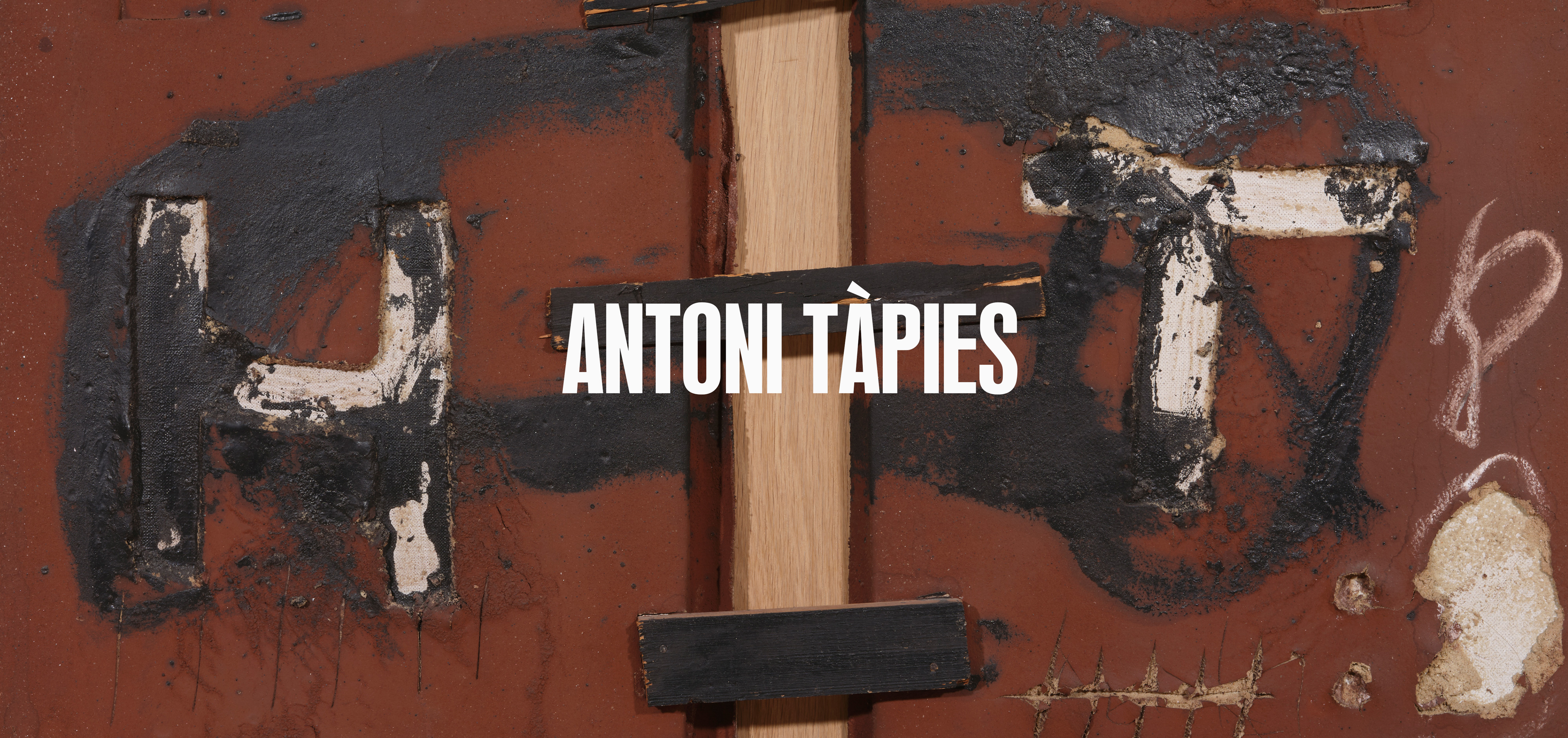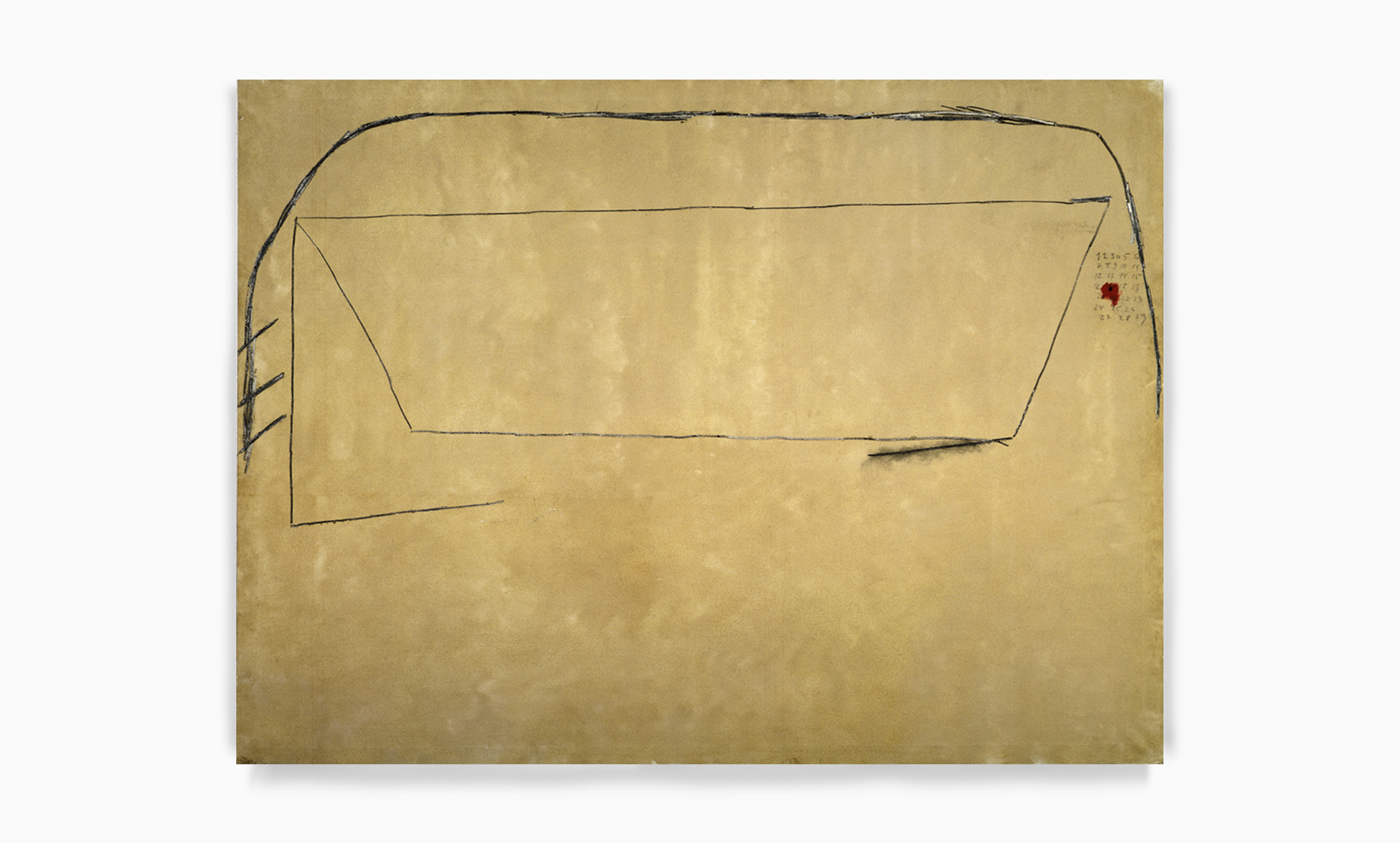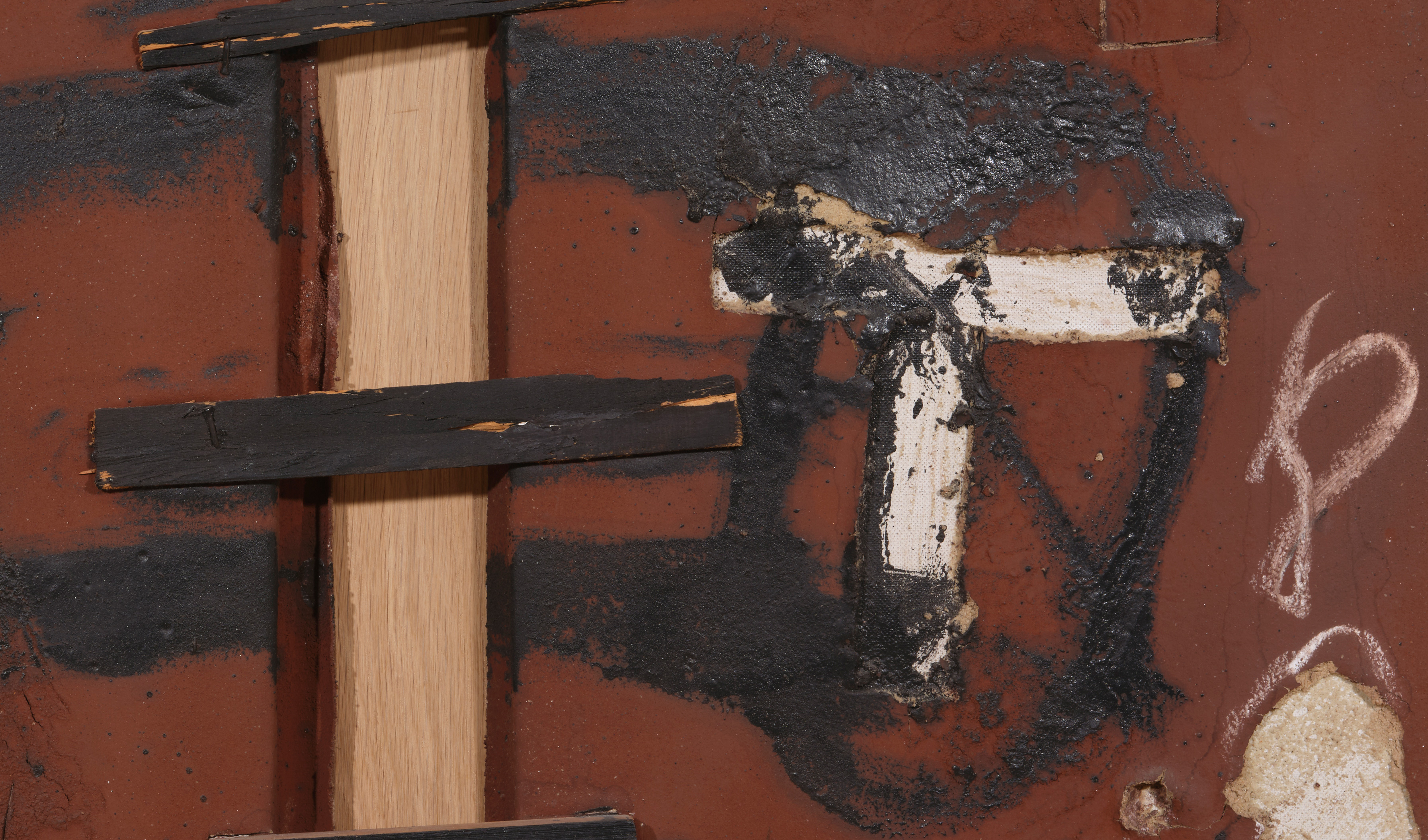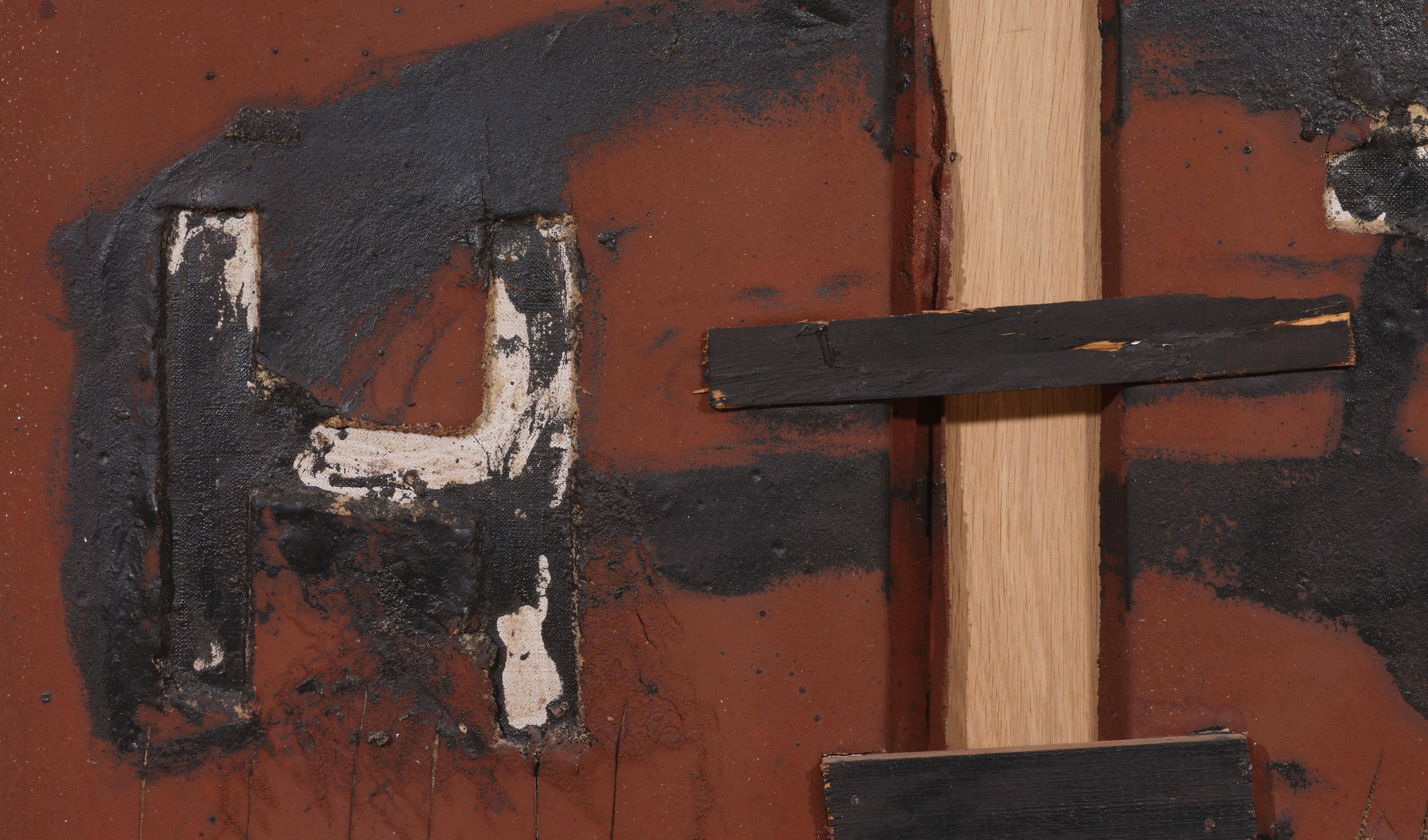Antoni Tàpies (1923 – 2012)
Petit marron en deux parties, 1974
Oil, sand, nails, and wood on canvas
55,3 x 75,5 cm | 21 3/4 x 29 11/16 inches
Petit marron en deux parties | 1974
Antoni Tàpies mastered the use of textures and delivered a raw body of works. Through arranged surfaces, assemblages, and collages, he explored, long before the emergence of Arte Povera, an abstract art incorporating so-called “poor” materials.
The artist, however, never limited his subject to sole physical matter: he opened up to a symbolic, political and spiritual interpretation of his art — an interpretation of his time and of the human condition in general, where sand, wood, metal, and everyday objects metamorphose into powerful metaphors.
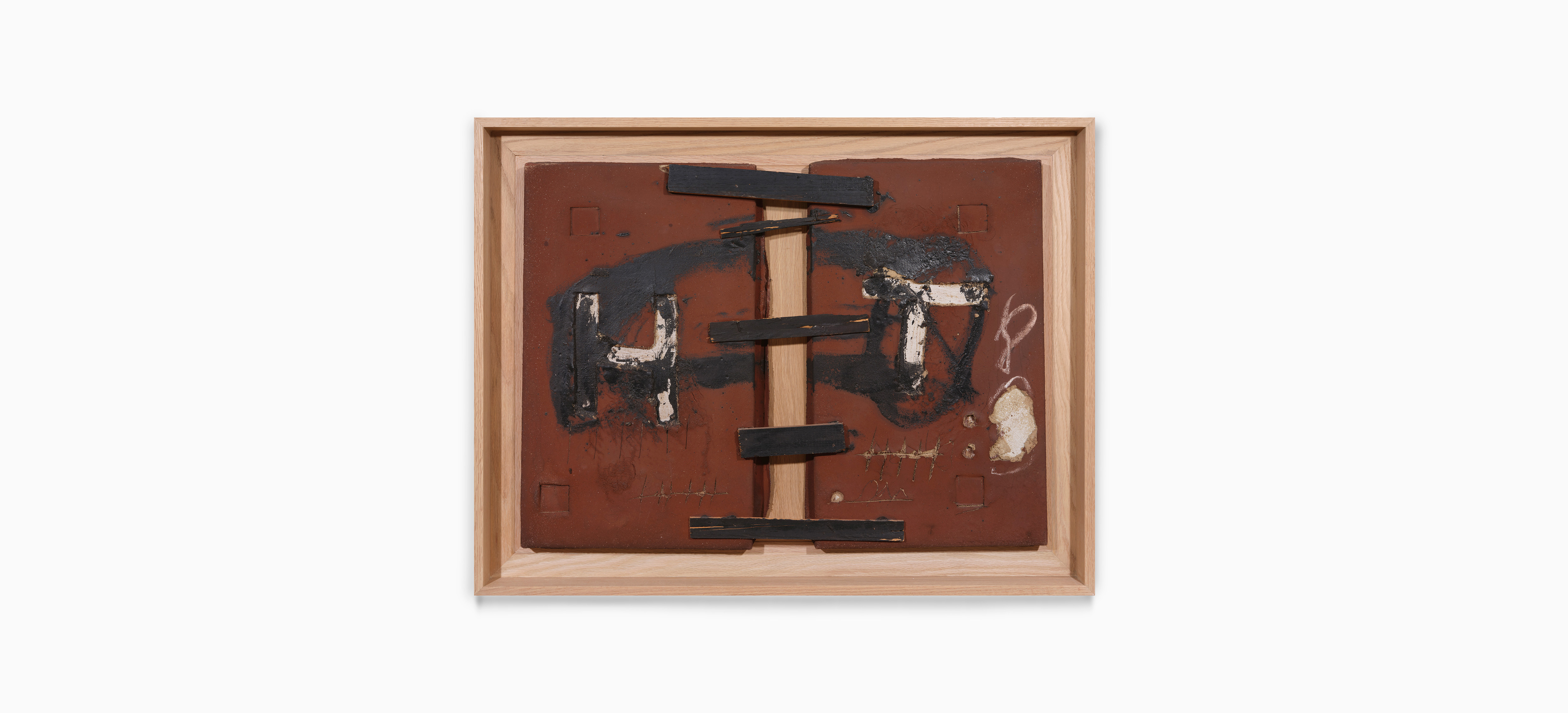
The 1970s, the final moments of the Franco regime, were marked by rare violence towards Spanish civil society. Resistant to abstraction, the government subjected artists to various forms of censorship. Bearing witness to historical events, but the hidden, scattered, symbols on the surface of his canvas allowed Antoni Tàpies to bear witness to historical events, and materialise them in his works.
During the same period, the artist started focusing on larger materials and pieces of furnitures that led him to create “object-sculptures”, as seen in Petit marron en deux parties. Characterized by a revolutionary modernity both in political and plastic terms, his work quickly gained international recognition. In the 1970s, he was exhibiting throughout Europe, with frequent solo shows in cities such as Barcelona, New York, Stockholm, Milan, London, or Cologne, and in 1973, a major retrospective at the Museum of Modern Art of the City of Paris.
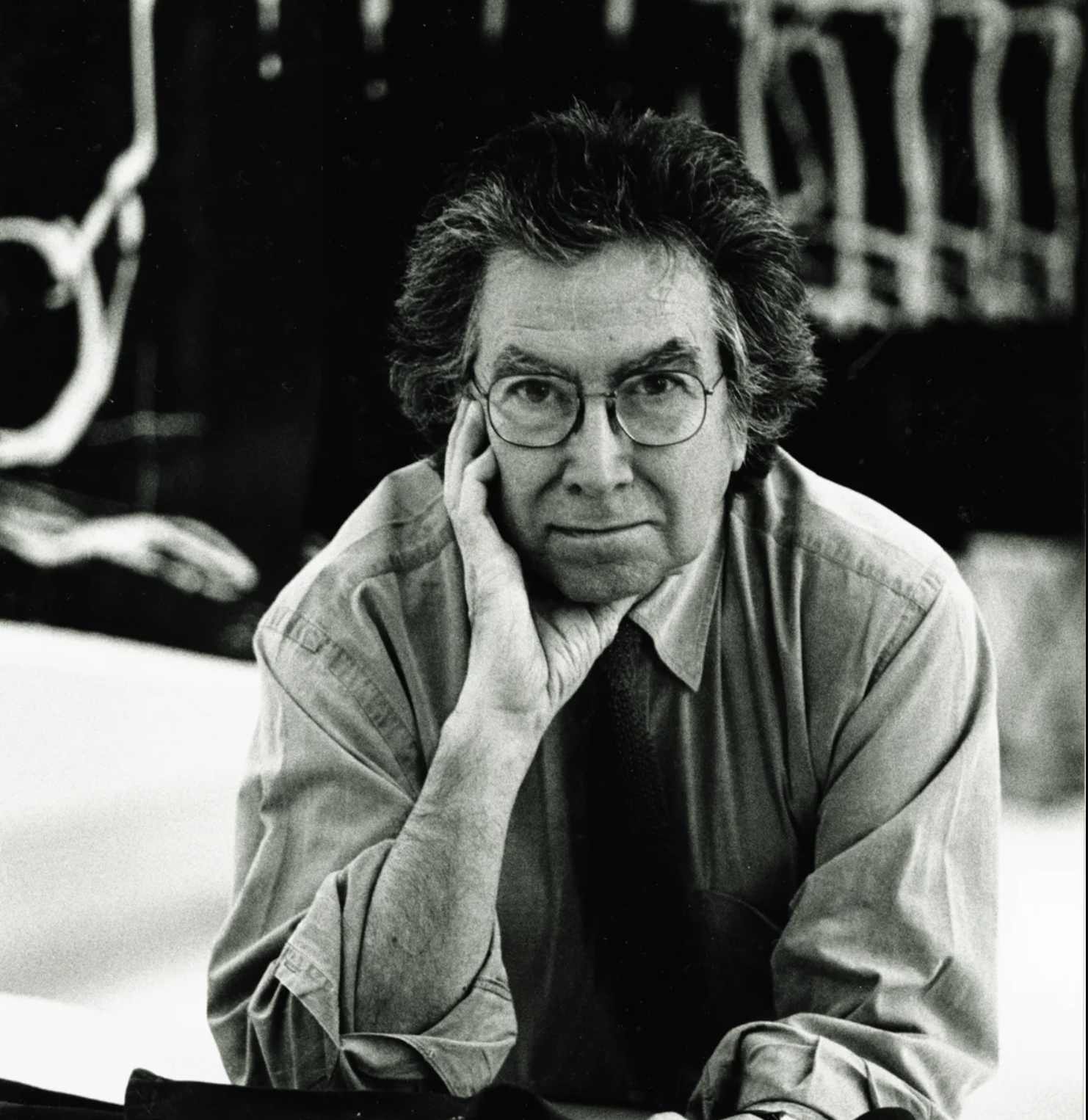
Antoni Tàpies, 1993 © Franziska Messner-Rast
“I regard mysticism as a mindset necessary for scientific thought, as well as for art.
Antoni Tàpies
It allows one to discover things that cannot be found by other means.”
In 1974, as Antoni Tàpies received the British Arts Council Prize at the International Print Exhibition, the very last death sentence by strangulation was carried out in Spain, leaving the country profoundly wounded and mourning the victim, Salvador Puig i Antich, a young Catalan activist. That year, the artist produced several works as tributes to his passing.
Tàpies produced a highly symbolic work, excluding any narration or literary content, yet still remaining fully engaged in the reality of his time. Petit marron en deux parties makes no exception; therefore, it cannot be fully understood outside of its historical context and the author’s stance on democratic rights and freedoms, as well as the defense of Catalan language and nation.
But as all symbols used and created by the artist, the ones that fill the canvas remain open to interpretation. Deliberately ambiguous, the context alone would not be able to explain this painting entirely: Tàpies invites the viewers to find their own, personal, explanations for the scattered clues, without definite answers.
Gathering all of Antoni Tàpies’ distinctive traits, Petit marron en deux parties is a diptych consisting of two pieces connected with uneven and blackened wooden slats. Like a mirror, the two parts respond to each other and dialogue through similar compositions. They are both covered with a canvas, which disappears behind a thick layer of brown sand, scratched in places with parallel marks barred by one horizontal scrape, recalling graffiti on prison walls, each stroke representing one more day spent within its walls.
Politically very active, Tàpies regularly participated in clandestine anti-regime gatherings and had been arrested and imprisoned for a few days in 1966. Other marks emerge on the surface: what looks like a signature at the bottom right, an eight — or the infinity sign — written in white chalk, two prints as if made by fingers and perhaps the one of the palm of a hand.
Bare in places, the canvas presents a raw and rough surface where the material seems to have been carved to shape an H on the left side and a T on the right. Such patterns often appear in Tàpies’ works and the way they are usually rendered, textured, glued, scratched or engraved, highlights the artist’s focus on materiality and the relationship between form and its meaning.
For him, the letter T stands both as a signature and as the Catholic cross which, in his work, holds a broader significance: it represents the intersection of the material and spiritual realms, the human condition caught between earthly limits and the pursuit of transcendance. The letter H, on the other hand, might refer to a barrier, a wall (the name Tàpies, derived from tàpia, means “wall” in Catalan), or indeed, to a prison. A reference to the censorship of the time, the carved H, and the work as a whole, thus appear to be a hidden message to be deciphered by those who can read between the signs…
In the titles of Antoni Tàpies’ works, few direct elements are given to shed light on their subject: they are to be gathered within the painting itself, in the shapes, textures and scattered marks that emerge on the surface.The retrieved objects whose previous lives resonate like a distant echo, the irregular tracings, the rough lines, seem to appeal to an instinctive, almost primal, understanding.
An unconventional beauty emanates from his works, inhabited by the artist’s sensitivity and perspective on his time — the inherent mystery and spirituality allow the randomness of intuitions the freedom of intimate and personal interpretation. Tàpies’ works are never merely visual: they demand a tactile engagement, a complete awakening of the senses.
Such depth and commitment inevitably attracted some of the most renowned art dealers at the time: the Maeght Gallery organised several exhibitions dedicated to his work in Barcelona, and in 1975, presented a solo show featuring Petit marron en deux parties. The painting would later travel to New York, at the end of the same year, to be exhibited at the highly influential Martha Jackson Gallery.

View of the exhibition « Antoni Tàpies. The Practice of Art ». @Museo Reina Sofía and Fundació Antoni Tàpies, 2024.
“Sometimes, people have the idea that art should be very refined. But I have always believed that art can be made from simple, modest things...
Antoni Tàpies
Small things can be transcendent. They can change the way we look at the world. I think it's important to make art from almost anything.”
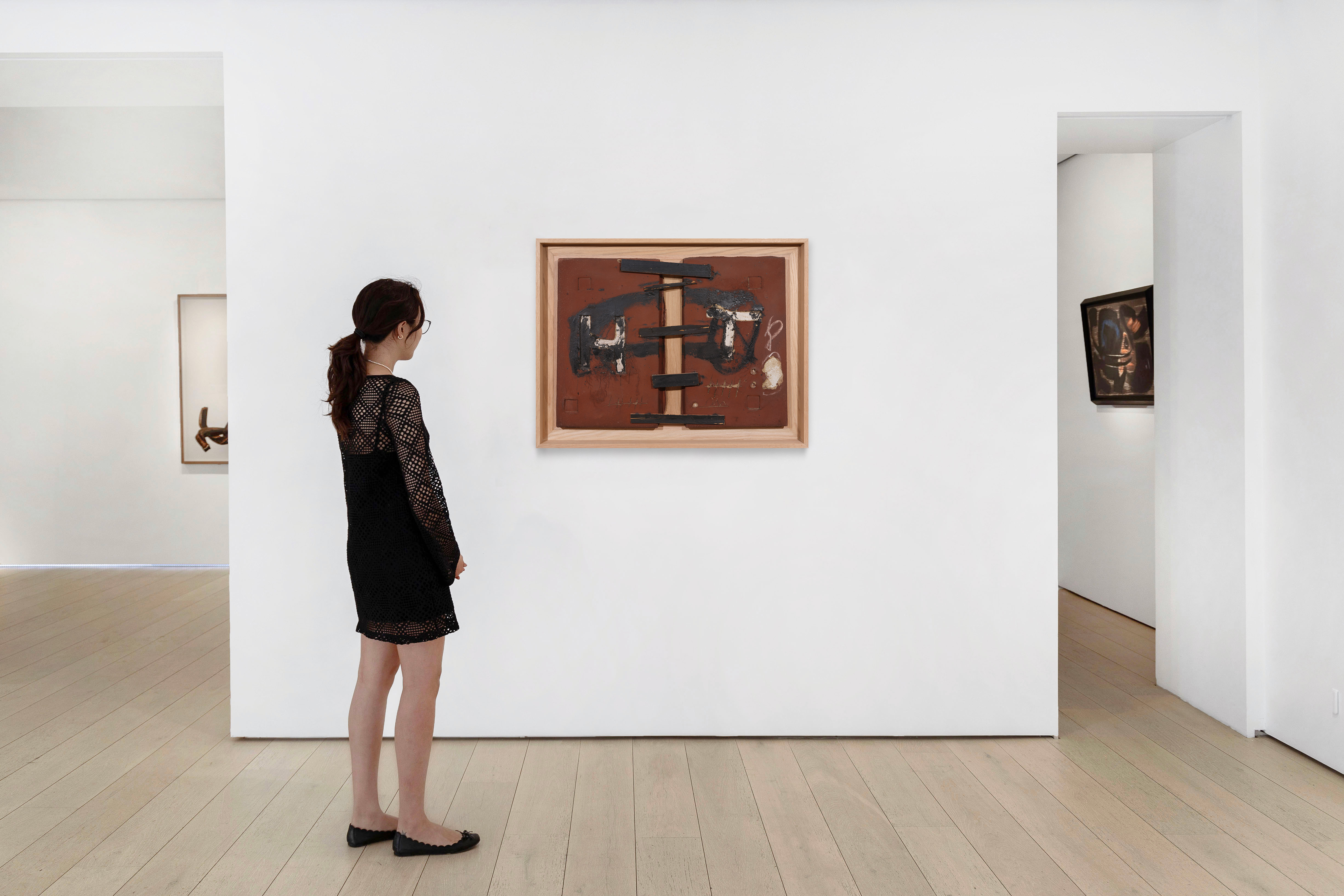

Antoni Tàpies, Studio view, 1966 © Ralph Herrmanns
About the artist
Antoni Tàpies was not only a painter, but also a sculptor and engraver, as well as an essayist and art theorist: the breadth of his research reflects an exceptional artistic and intellectual achievement that continually nourished his practice. Extremely cultivated, he enriched his work with a thought built on his readings and encounters with philosophers and theorists of his time.
His first solo exhibition took place in 1950, and in 1952 he participated in the Venice Biennale. Both in his own country and internationally, his visibility and recognition kept on growing until his death in 2012. During his lifetime, his was awarded numerous prizes; he is now exhibited in many of the most important institutions in the world: at MoMA and at Guggenheim in New York, at the Neue Nationalgalerie in Berlin, at the Centre Pompidou in Paris… His work is also preserved and represented by the Antoni Tàpies Foundation in Barcelona, the city of his birth and death.
Artists
- Karel Appel
- Victor Brauner
- Alberto Burri
- Alexander Calder
- Lynn Chadwick
- Geneviève Claisse
- Claudine Drai
- Jean Dubuffet
- Jorge Eduardo Eielson
- Sam Francis
- Simon Hantaï
- Hans Hartung
- Le Corbusier
- Fernand Léger
- Mao Lizi
- Georges Mathieu
- Alicia Penalba
- Serge Poliakoff
- Judit Reigl
- Jean-Paul Riopelle
- Gérard Schneider
- Pierre Soulages
- Geer van Velde
- Victor Vasarely
- Bernar Venet
- Claude Viallat
- Maria Helena Vieira da Silva
- Ossip Zadkine

